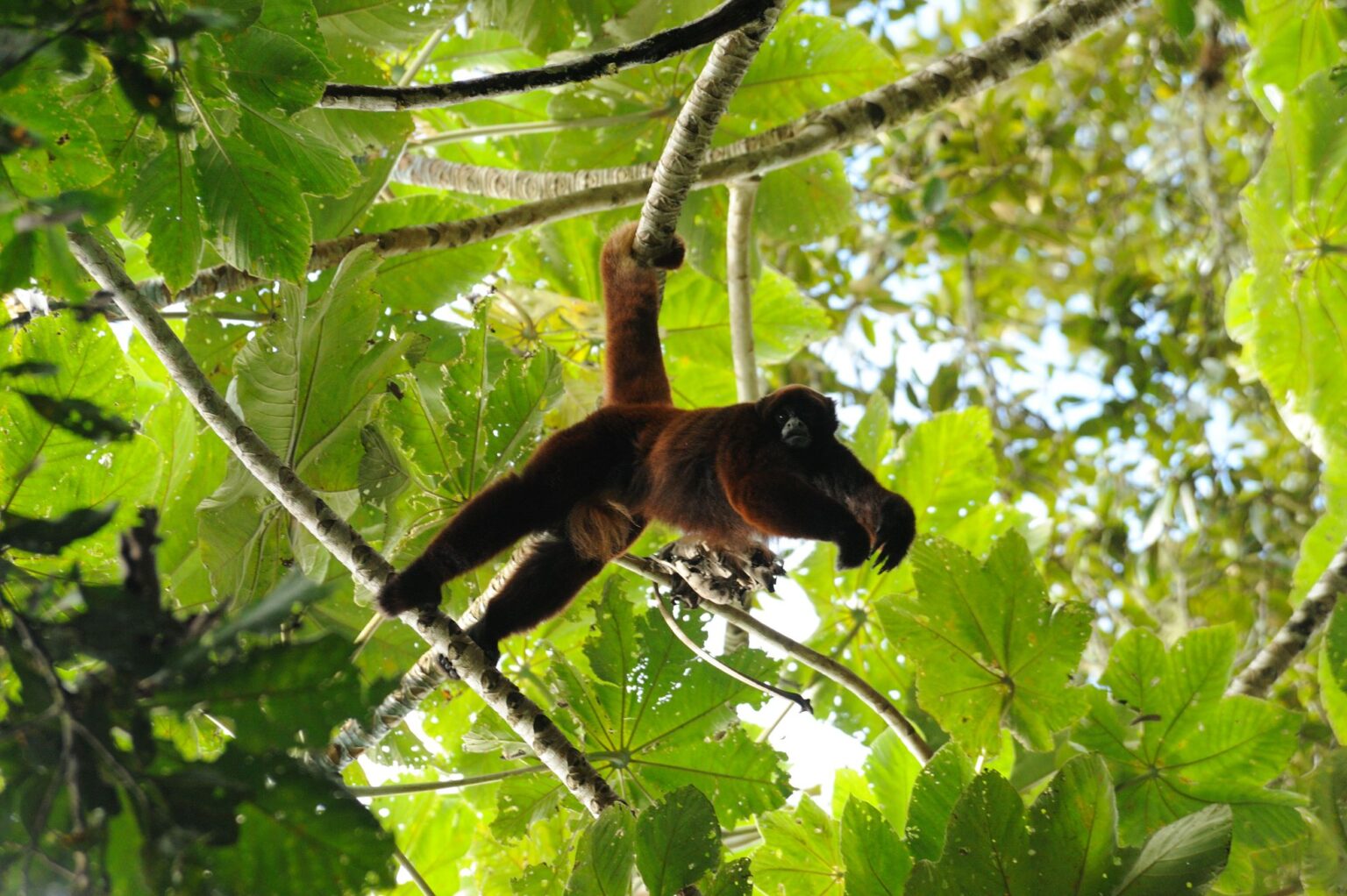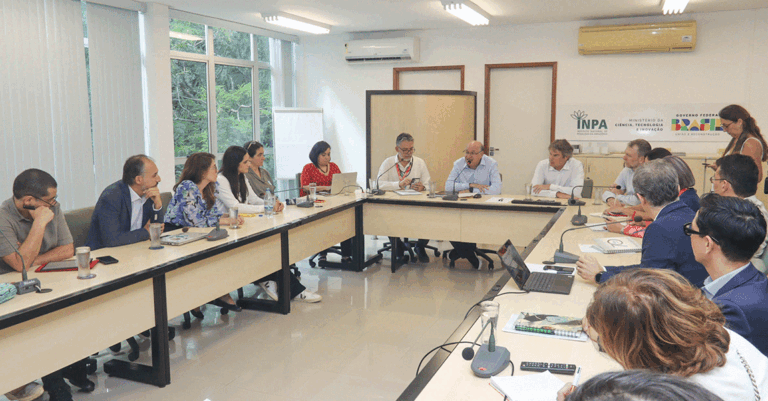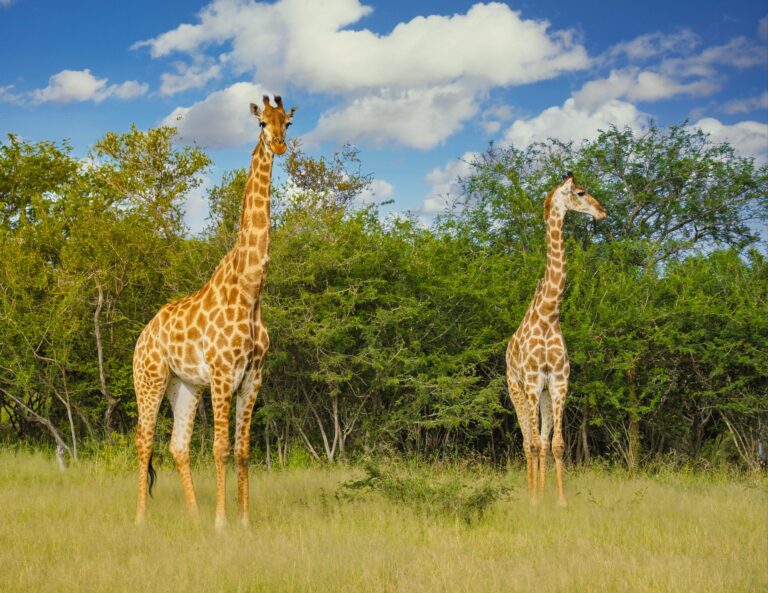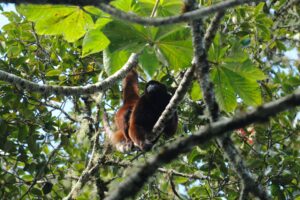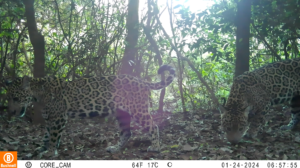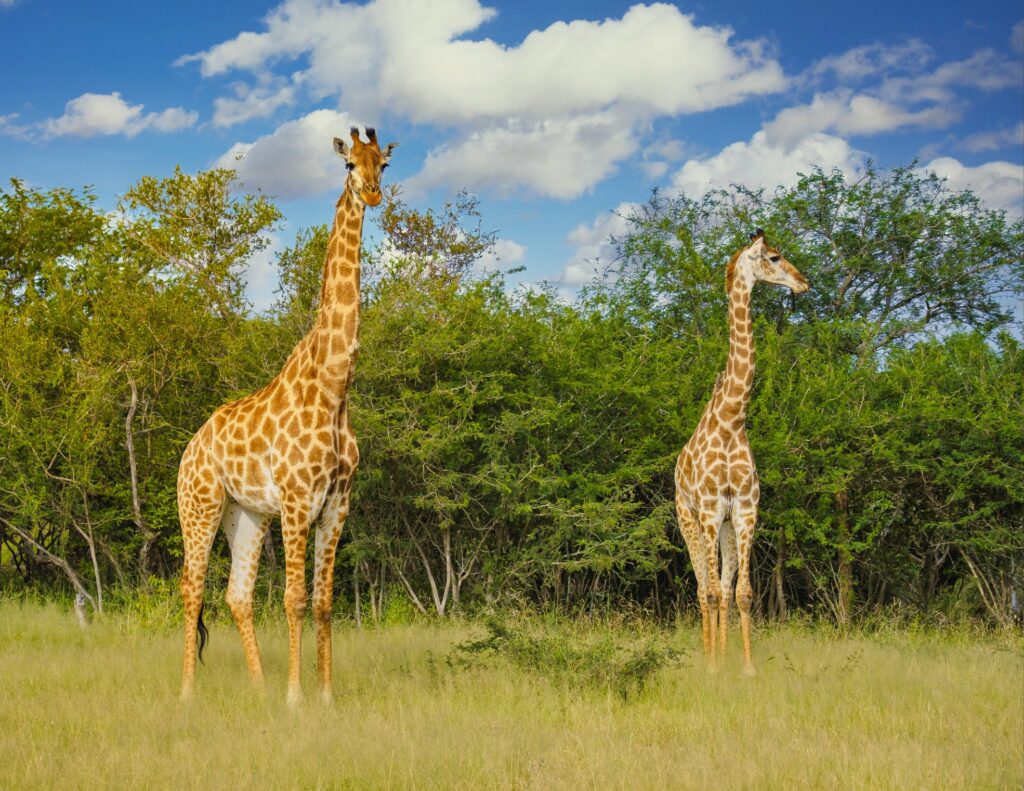Índice
ToggleIt was in the back of a pickup truck, while exploring Peru with limited resources but great enthusiasm, that three researchers made an incredible discovery – or rather, rediscovery. The year was 1974, and the researchers were hitching a ride when a hunter climbed into the vehicle. “He had a bag, and I asked what was inside. He opened it and showed me the skin. I recognized it immediately. It was the peruvian yellow-tailed woolly monkey. He had caught the animal a week before, and that’s how we knew the species wasn’t extinct as previously thought,” recalls primatologist Russell Mittermeier, who led the expedition exactly 50 years ago. This rediscovery became a cause for celebration and pride in Peru, which is now commemorating the 50th anniversary of reencountering this monkey, unique to the country.
Confined to the high forests of the Peruvian Andes, the yellow-tailed woolly monkey (Lagothrix flavicauda) may have been rediscovered, but its situation is far from comfortable. Researchers estimate the species has lost 80% of its original population. To raise awareness about the conservation of this critically endangered species, the campaign “Achórate por el mono choro de cola amarilla” was launched. This translates to “React for the yellow-tailed woolly monkey” in English.
The mobilization around this animal was part of the preparations for the 50th anniversary, according to primatologist Fanny Cornejo of Yunkawasi, an organization that has led conservation efforts for this species in Peru since 2007.
“We conducted this campaign over a year as a lead-up to this moment, the anniversary, to encourage people to react for the conservation of this monkey and to join us in this celebration. It’s a call for people to care about nature conservation in general,” Fanny explains.


The festival will feature actions and events throughout May in five cities and various communities in Peru, including a major celebration in the capital, Lima, at the end of the month, expected to draw around 10,000 people with music, food, and — of course — much celebration honoring el mono choro de cola amarilla.
Beyond environmental concerns, the celebration is also a cultural festivity, recognizing the yellow-tailed woolly monkey as a symbol of Peru’s biodiversity. Two statues have already been inaugurated, one in Lima and another in the municipality of Moyobamba. A third will be built at the end of May in the city of Amazonas.
A new commemorative stamp, a play, and a documentary about the monkey have also been released. Also, an environmental education kit, developed by Yunkawasi’s team together with the Ministry of Environment, will be distributed to teachers and environmental agents across the country. “This will be a teaching tool to train people in conservation. So far, more than 20 districts in Peru have adopted and received the kit,” says Fanny.
The campaign even produced WhatsApp stickers featuring the mono choro. “The idea is to make every Peruvian aware of this monkey, especially decision-makers,” she summarizes.

Decisions, in fact, need to be made by people on a daily basis, Fanny adds. “Where does your coffee come from? People need to ask themselves this because much of the deforestation in Peru comes from small farmers. And this is linked to consumer demand. We need people to understand that the coffee and chocolate they consume likely come from deforested areas. Consumers have the power to demand products that support conservation.”
Initiatives like “Aliado por la Conservación” selects and promotes products from forest conservation and local producers who need support.
In parallel, Yunkawasi works with farmers to implement agroforestry and encourages rural producers to commit to conservation on their lands.
“The monkey is part of an ecosystem, and we are using it as the face of this movement for biodiversity to convince policymakers and local people to care about conservation. We need everyone to engage in this issue. We have a climate and a biodiversity loss crisis to face,” Fanny emphasizes.
In April of this year, 23 congress members from seven different parties submitted bill number 7559, which promotes the protection of el mono choro de cola amarilla in the country. The proposal includes creating a National Action Plan for the species’ conservation, improving regional governments’ capacity to act on behalf of the monkey, and establishing the first week of May as a commemorative date for the primate.
“The proposal is being reviewed by committees and should be voted on in Congress in the coming weeks. It might be approved by the end of May or June,” Fanny believes.
A Singular Monkey
With a body length of up to 50 centimeters and a tail measuring another 60, making it the largest mammal endemic to Peru, the mono choro stands out. Besides the yellow-tipped tail which named the species, the monkey has other striking features like a white nose and chin set against its reddish-brown fur. Males also have a scrotal sac covered by long yellow fur, another unique trait of this primate that lives in social groups of 5 to 30 individuals.
This monkey has a unique ecology and habitat. Unlike others in its genus, they live in mountainous areas above 2,000 meters in the high forests of the Peruvian Andes. This inhospitable and hard-to-reach habitat is what makes finding and studying this animal so challenging.

The exact limits of its range are still unclear, the primatologist Fanny Cornejo admits. “We thought they were restricted to northern Peru, but a few years ago, we found a new population in the country’s central region, isolated from other known populations,” she adds.
Expeditions in the Andes aim to clarify the monkey’s distribution, while Fanny and her team work to get congressmen to approve the creation of a regional protected area to safeguard this newly identified population.
Simultaneously, genetic research and population surveys aided by local communities aim to better understand the species — and its differences from other woolly monkeys, ranging from habitat to diet — and its population trends, in order to identify declines and potential local extinctions.
“We know they have lost about 80% of their historic distribution over the past 50 years. In some areas, where locals said the monkeys used to be, we no longer find them,” Fanny reports.
50 Years Ago: Memories of a Rediscovery
The yellow-tailed woolly monkey was first recorded by science by none other than the naturalist Alexander von Humboldt in 1802 during his expedition through South America. At that time, the naturalist did not see the animal in the wild, only its skins, which were used as saddles by the natives. Ten years later, based solely on the skins, Humboldt formally described the new species.
It took over a century, until 1925 and 1926, for two scientific expeditions — from the British Museum and the American Museum of Natural History — to reencounter the animal and collect five more specimens for their collections. “After that, from 1926 until 1974, nothing. No records,” points out Russell.
After nearly five decades of silence about elmono choro de cola amarilla, which by then had practically become a forgotten legend, the species was considered likely extinct and little information was available.

It was then that Russ, a newly graduated primatologist, decided to lead an expedition to find the animal. Accompanied by Peruvian scientist Hernando de Macedo Ruiz and researcher Anthony Luscombe, who at the time was working at the Lima Zoo, they embarked on this journey in 1974.
“We had no funds, so we traveled in the back of pickup trucks,” recalls the American researcher. The lack of funds turned out to be the researchers’ luck. “During this trip to the highest parts of the Andes, we passed by about five hunters on the road, who also got into the truck. One of them had a bag. I asked what was inside, and he pulled out a monkey skin, which I immediately recognized. That alone made the trip worth it,” Russell remembers.
Thus, at the end of April 1974, through a monkey’s skin — just like Humboldt — they had definitive proof that the yellow-tailed woolly monkey still existed there. With renewed enthusiasm and hope, along with the information collected from the hunters, the expedition set off for the city of Chachapoyas in northern Peru, which served as their base while exploring the Andean mountains. For nearly a week, the researchers tried, without success, to find the monkey in the high forests of the region. When they least expected it, however, they came across a living specimen of the legendary yellow-tailed woolly monkey. In a situation quite different from what they had imagined, upon descending to the village of Pedro Ruiz Gallo on May 4th, 1974, they found a young male being kept as a pet by a soldier. After some negotiation, which included a lesson on the scientific importance of the animal, the soldier agreed to sell the monkey to the researchers. “At the time it was expensive, about 125 dollars,” recalls Russ, “and we only had 30,” he laughs, “but he trusted us and we paid the rest later.”
“Five days later, we held a press conference and got incredible coverage, both nationally and internationally. And the monkey became a symbol for Peru. It is the largest endemic mammal in the country,” recounts Russell.

Russell’s quest for the woolly monkey didn’t end there. He returned to Peru in 1978, when he found another monkey being kept as a pet, and again in 1983, when he finally documented the primate in the wild, fortuitously accompanied by a film crew that, for the first time, recorded the animal on video in its natural habitat.
The scientific excitement around the species led to actions for the woolly monkey’s conservation, such as the creation of protected areas, institutional support for research and conservation, and the involvement of more and more scientists. The monkey even became money, engraved on the 1 sol coin.
However, the momentum generated by the rediscovery dwindled in the following decades, especially outside the boundaries of science.
“Even though the monkey was widely discussed in the 70s and 80s — and most protected areas were created in the 80s — later there was silence about the species. Even when I was a student obsessed with primates, the yellow-tailed woolly monkey was something mythical to me. Where is this monkey that no one hears, no one is observing?” recalls Fanny Cornejo.

One of the current leaders of Yunkawasi, founded in 2007 to work with the species, Fanny enjoys admitting that they are not the only initiative working with the mono choro, but they are certainly “the loudest.” It is with all this “noise” that she and her team have put the primate back in the spotlight and made people know — and love — the animal.
The Yunkawasi team currently monitors populations of the monkey in four locations, in partnership with community members. Starting in June, the action will be expanded to protected areas, in collaboration with Peru’s National Service of Natural Areas Protected by the State.
“If you have the support of the communities, you can achieve a lot, they become the protectors of the animal,” emphasizes Russ, now Director of Conservation at Re:wild, an organization that has funded the work with the mono choro and the communities living in the region. “I returned once more, after 27 years, in 2010, and we easily found the animal in two places. Fanny [Cornejo] already had a whole community working for the conservation of the animal,” comments the primatologist, who returned to the Peruvian Andes this year for the fifth time, for the Achórate Festival and the celebration of el mono choro de cola amarilla.
“Nowadays, people’s attention span is very short, so if you don’t keep reinforcing the importance of an issue, of a species, people forget. And the idea with this 50th anniversary is to once again show that the animal is important, just like the environment, because the tropical Andes is the most diverse hotspot in the world, number one in species and biodiversity,” emphasizes Russ.
The Future of the Species
One of the main challenges to ensuring the future of the species is precisely protecting its habitat. “Today we know that less than 25% of the potential habitat of the yellow-tailed woolly monkey is within any protection category,” highlights Fanny.
At the national level, there are four reserves where the monkey lives, but the areas are not continuous. Fragmentation is the biggest obstacle, points out the researcher, because as a large species, it requires extensive areas of well-preserved forest. The natural characteristics of the mountain forests themselves hinder connectivity, with valleys, canyons, rivers, as well as human obstacles such as cities and roads.
For the future, the primatologist’s goal is clear: “ensuring that this monkey doesn’t go extinct. That is the main goal. The second goal is that by 2030 we can reduce the threat level of the species from Critically Endangered to Endangered,” says Fanny. She also adds to her ambitious wish list: expanding work with communities; proper management of protected areas; and making people care, allowing them to “rebuild their connection with nature.”
*Original text translated from portuguese by Bernardo Araújo
As informações apresentadas neste post foram reproduzidas do Site O Eco e são de total responsabilidade do autor.
Ver post do Autor


